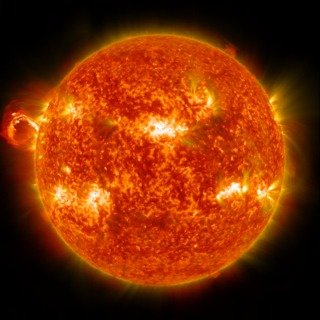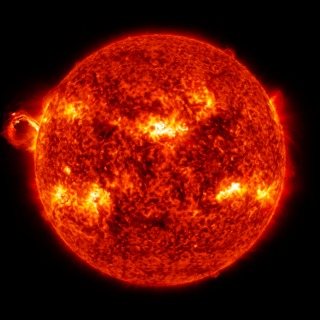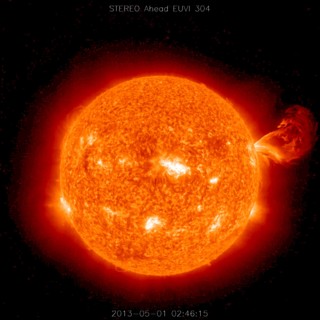

| Visitors Now: | |
| Total Visits: | |
| Total Stories: |

| Story Views | |
| Now: | |
| Last Hour: | |
| Last 24 Hours: | |
| Total: | |
NASA’s Many Eyes On the Sun – Gigantic Prominence Eruption and CME
Tuesday, May 7, 2013 16:36
% of readers think this story is Fact. Add your two cents.
NASA’s Latest Update:
Several missions within NASA’s Heliophysics observatory captured images of a Gigantic Eruption on the Sun on May 1, 2013. Working together, such missions provide excellent coverage of a wide variety of solar events, a wealth of scientific data — and lots of beautiful imagery.
NASA’s Heliophysics Fleet Captures May 1, 2013 Prominence Eruption and CME
Follow the link to watch the video in full HD
https://www.youtube.com/watch?v=puEqmd59Qpg

SOHO LASCO C2 footage covering April 30 to May 1, 2013.
On May 1, 2013, NASA’s Solar Dynamics Observatory (SDO) watched as an active region just around the left edge of the sun erupted with a huge cloud of solar material–a heated, charged gas called plasma.
This eruption, called a coronal mass ejection, or CME, flung the plasma out through the solar system. Viewing the sun in the extreme ultraviolet wavelength of 304 angstroms, SDO provided a beautiful view of the initial arc as it left the solar surface.

Full 4k resolution SDO AIA 304 footage of prominence eruption.
Credit: NASA/SDO/AIA
Such eruptions soon leave SDO’s field of view, but other satellites in NASA’s solar-observing fleet can pick them up, tracking such space weather to determine if they are headed toward Earth or spacecraft near other planets.
With advance warning, many space assets can move into safe mode and protect themselves from the ill effects of such particle radiation.
In addition to the images captured by SDO, the May 1, 2013 CME was also images by the ESA/NASA Solar and Heliospheric Observatory (SOHO). SOHO houses two overlapping coronagraphs–telescopes where the bright sun is blocked by a disk so it doesn’t overpower the fainter solar atmosphere–and they both saw the CME continue outward.
The LASCO C2 coronagraph shows the region out to about 2.5 million miles. The LASCO C3 coronagraph expands even farther out to around 13.5 million miles. Both of these instruments show the CME as it expands and becomes fainter on its trip away from the sun.

Overlay blended combination of SDO AIA 304 and 171 wavelength 4k images.
Credit: NASA’s Goddard Space Flight Center/SDO/AIA
NASA’s Solar Terrestrial Relations Observatory (STEREO) Ahead satellite saw the eruption from a very different angle. It, along with its twin STEREO Behind, is traveling around the sun along a line very close to Earth’s orbit, but not in sync with Earth.
Currently, STEREO-A is more than a third of an orbit ahead of the Earth and has a view of the far side of the sun.
From this perspective, the CME came off the right side of the sun. STEREO has an extreme ultraviolet camera similar to SDO’s, but it also has coronagraphs like SOHO. As a result, it was able to track the CME from the solar surface out to 6.3 million miles.

STEREO Ahead EUV 304 angstrom footage of May 1, 2013.
Working together, such missions provide excellent coverage of a wide variety of solar events, a wealth of scientific data–and lots of beautiful imagery.


